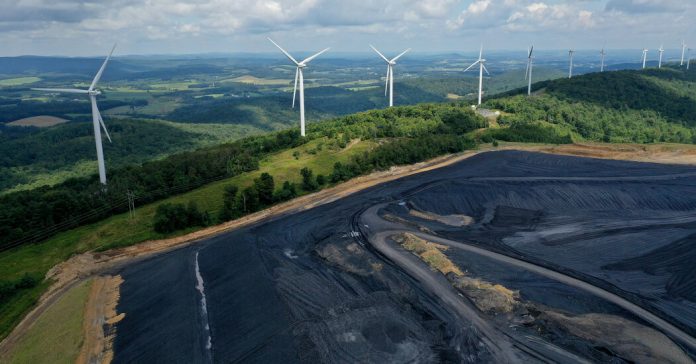Worldwide, development in renewable energy capability is ready to double by 2027, including as a lot renewable energy within the subsequent 5 years because it did previously twenty years, the Worldwide Power Company mentioned Tuesday.
Renewables are posed to overhaul coal as the most important supply of electrical energy era by early 2025, the report discovered, a sample pushed largely by the worldwide vitality disaster linked to the battle in Ukraine.
“This can be a clear instance of how the present vitality disaster could be a historic turning level towards a cleaner and safer vitality system,” mentioned Fatih Birol, the I.E.A. govt director, in a information launch.
The enlargement of renewable energy within the subsequent 5 years will occur a lot quicker than what the company forecast only a yr in the past in its final annual report, mentioned Heymi Bahar, a senior analyst on the I.E.A. and one of many lead authors of the report. The report revised final yr’s forecast of renewable development upward by 30 % after the introduction of recent insurance policies by a few of the world’s largest emitters, just like the European Union, america and China.
Whereas there was a wartime resurgence in fossil gas consumption as European nations have scrambled to exchange fuel from Russia after its invasion of Ukraine in February, the consequences are more likely to be short-lived, the company mentioned.
Perceive the Newest Information on Local weather Change
As an alternative, over the subsequent 5 years, the worldwide vitality disaster is anticipated to speed up renewable vitality development as nations embrace low-emissions expertise in response to hovering fossil gas costs, together with wind generators, photo voltaic panels, nuclear energy crops, hydrogen fuels, electrical automobiles and electrical warmth pumps. Heating and cooling buildings with renewable energy is without doubt one of the sectors that should see bigger enchancment, the report mentioned.
America handed the Inflation Discount Act this yr, a landmark local weather and tax legislation that, amongst many investments to scale back planet-warming greenhouse fuel emissions, made an “unexpected” enlargement in long-term tax credit for photo voltaic and wind initiatives extending by 2032, Mr. Bahar mentioned. Beforehand, these tax credit had been revised a number of years at a time. Extending the credit till 2032 supplies higher certainty for traders, which is necessary within the vitality trade, Mr. Bahar mentioned.
China alone is forecast to put in nearly half of the brand new world renewable energy capability over the subsequent 5 years, based mostly on targets set within the nation’s new five-year plan. Even nonetheless, the nation is accelerating coal mining and manufacturing at coal-burning energy crops.
The latest momentum in renewable vitality development isn’t sufficient to assist the world restrict world warming to 1.5 levels Celsius (2.7 levels Fahrenheit) in comparison with preindustrial ranges, mentioned Doug Vine, director of vitality evaluation on the Middle for Local weather and Power Options. The objective was set by the landmark Paris local weather settlement in 2015; past that threshold, scientists say the danger of local weather disaster, together with lethal warmth waves and coastal flooding, will increase considerably.
Scientists have calculated that assembly the 1.5 levels Celsius objective would require nations to curb or offset all carbon dioxide emissions by 2050. “We’re nonetheless not there,” Mr. Bahar mentioned, however the company’s new report signifies that narrowing the hole is “inside the attain of presidency insurance policies and actions.”
The principle obstacles in rich nations are prolonged allowing procedures and lack of enhancements and enlargement to grid infrastructure, the report mentioned. Some European nations have made progress on that entrance, together with Germany, which has lowered allowing timelines, and Spain, which has streamlined allowing and elevated grid capability for renewable vitality initiatives.
For low-income nations, the report mentioned, the problem is each weak grid infrastructure and the shortage of entry to reasonably priced financing for renewable initiatives, which require larger upfront prices for capital than they do for upkeep and operation. Excessive rates of interest on loans are sometimes a barrier for a lot of lower-income nations which might be probably the most weak but least chargeable for local weather change.
Ultimately month’s United Nations local weather convention in Sharm El Sheikh, Egypt, many world leaders made calls to overtake two highly effective monetary establishments, the World Financial institution and the Worldwide Financial Fund, which characterize a world monetary system that the leaders say disadvantages poorer nations. If applied, supporters say, the reforms might supply struggling nations decrease rates of interest and allow monetary establishments to draw trillions of {dollars} in non-public capital to assist these nations transition to renewable vitality.


